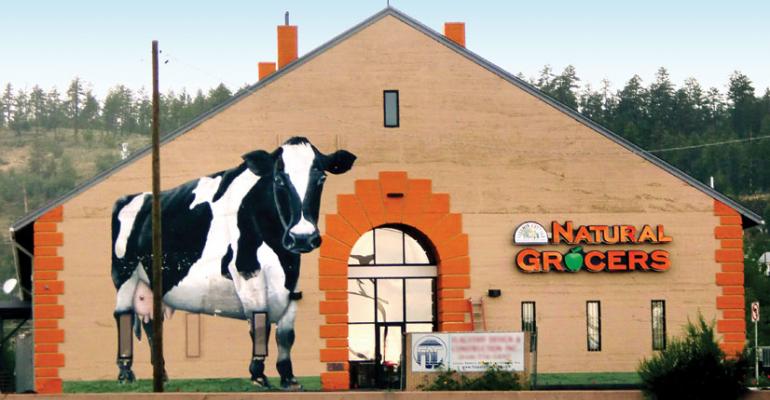For supermarket operators seeking to expand, the real estate opportunities have never been better — provided they are willing to be flexible with the size and shape of their stores.
Spaces abound for food retailers that can adapt to previously occupied boxes — from book stores to general merchandise outlets to movie theaters — many of which have been sitting unused since the most recent economic downturn. In addition, the recent acquisition of Albertsons and its sister chains by private equity and the ongoing questions surrounding A&P and Pathmark locations in the Northeast may continue putting new space on the market for other chains in expansion mode.
“If you went back 15 to 20 years ago, virtually all supermarkets were ‘build-to-suit’ — there was a vacant piece of land and the developer built the store to meet the supermarket specifications, and that was probably 90% of the supermarket deals,” Harvey Gutman, of Brookside Advisors, West Orange, N.J., told SN. “Today that is probably 50% or 60%, with the rest being takeovers of existing space. That is a big change from 15 years ago.”
Empty boxes from companies that went out of business or cut back on their locations, such as Circuit City, CompUSA and Linens ’n Things, have opened up spaces that landlords and local municipalities are eager to fill, and supermarkets in many cases have been able to take them over at much lower cost than building new stores from the ground up.
“That has increased the availability of space for supermarkets that are growing, along with the space from supermarket companies that are cutting back,” Gutman explained. “Existing retail space is a prime source of retail space today.”
Some observers note that many of the best of the shuttered locations have already been taken, but others point out that many more such sites are still coming online.
Real estate experts said supermarkets would almost always prefer to move into a space that had previously been a supermarket, if the location is right, because it can reduce construction costs for installing refrigeration and drainage infrastructure, for example. But supermarkets are often incented by landlords and municipalities seeking to bring strong supermarket operators into underserved areas or vacant properties.
Perhaps no company has exemplified those types of real estate opportunities as much as Natural Grocers by Vitamin Cottage, the Lakewood, Colo.-based natural and organic retailer that is rolling out its small-format stores throughout the West.
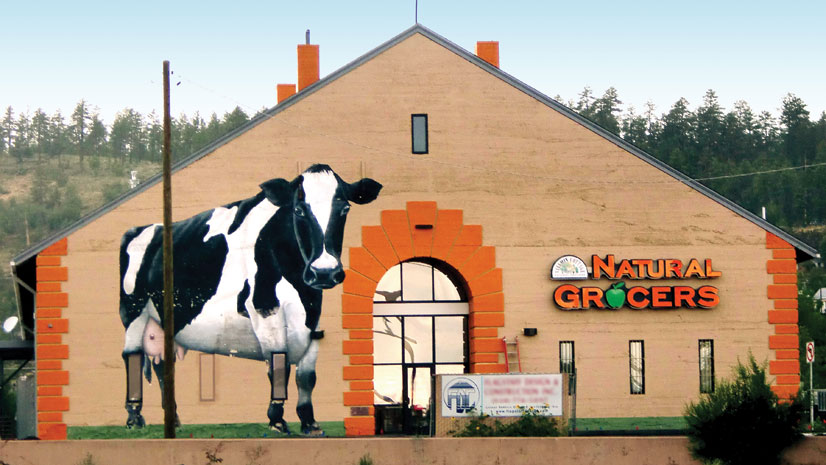
Among some of the unusual locations taken over by Natural Grocers are a movie theater in Dallas, an old pool hall in downtown Denver, and a former armory in Flagstaff, Ariz. The company has also taken over former supermarket and drug store locations, as well as built a few stores from the ground up.
In many cases, Natural Grocers is just retaining the shell of the building and completely revamping the interior, said Alan Lewis, director of special projects at the chain.
“We have used all kinds of spaces,” he said. “They really just end up skins that we have to start over with on the inside.”
As a company committed to sustainability, Natural Grocers sees using previously built spaces as another aspect of recycling to help preserve resources — but it also conserves cash.
“Part of our mission has always been sustainability — we call it cheap-ability because it is so less expensive to be green,” Lewis explained. “We have always had that asset going back 30 or 40 years.
“The idea is to spend as little as possible, and save money over the long run, on energy, recycling and things like that.”
Because Natural Grocers has limited service departments and no real food prep areas, the company can turn the boxes around more quickly and at less cost than most traditional operators would be able to.
He said capital expenditures average about $2 million, vs. as much as $10 million to $20 million for a typical full-service traditional supermarket.
In 2011 Natural Grocers opened its third location in Dallas in the former shell of the Casa Linda movie theater, a 12,500-square-foot space that had been vacant for the previous 12 years. In order to preserve the historic flavor of the 62-year-old building, Natural Grocers retained the neon marquee and tower that the theater was known for, winning praise from the local neighborhood association and from civic leaders.
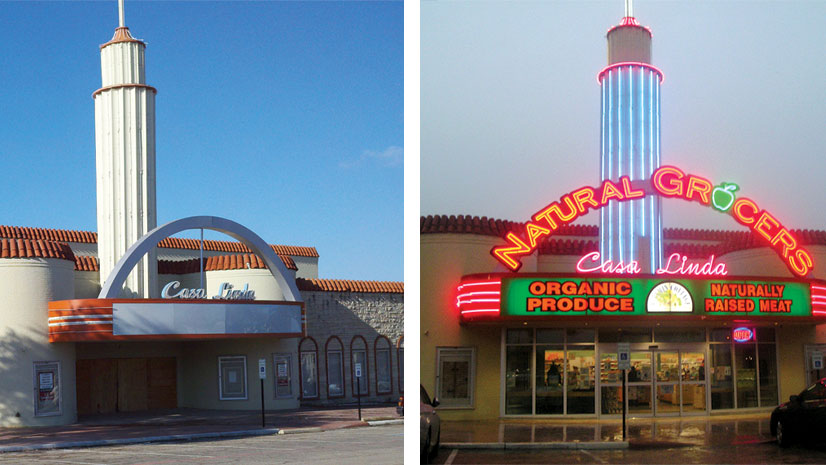
“That’s the nice thing about a small, flexible footprint — there are a lot of opportunities out there that a retailer with a larger footprint would not have been able to go into,” Lewis noted.
Natural Grocers stores measure anywhere from 5,000 to 16,000 square feet, although more recently the chain has been seeking larger locations.
A spokeswoman for Natural Grocers, which now operates 67 stores and is expanding rapidly, said many communities welcome the retailer with open arms.
“Often we are moving into a space that has been vacant or that lost a big-box retailer, and Natural Grocers has helped revive the area, and helps the small businesses that are next door,” she said.
Lewis said the chain often does well as the anchor of small retail centers — “We become the grocery store that supports everyone else around us, and we work with economic development commissions a lot on those issues.”
Natural Grocers often seeks to revive “those urban strip centers that just didn’t make it through the ’80s and ’90s very successfully,” Lewis explained. “But now there’s money and focus, and stronger communities to support them.”
The chain’s initial public offering last year is helping boost its expansion efforts, he explained.
“It’s easier to put those good deals together when you have a checkbook and you can write those big checks to developers and landlords,” Lewis said. “It used to be more difficult because we were funding through our line of credit and cash flow. It has given us a lot more confidence to move forward, especially with some of the premium real estate that’s been available.”
Earlier in the chain’s history, it was making some site decisions based more on affordability as opposed to securing the best possible site, he explained.
“Having that funding enables us to do things we weren’t able to do 10 years ago,” Lewis said.
Sprouts Expands
That is also the thinking of Phoenix-based Sprouts Farmers Market, another fast-growing player with a relatively small box in the natural/organic space, which recent filed to begin selling shares of its stock.
In its prospectus for an initial public offering, Sprouts, which operates 157 stores now, said research by The Buxton Co. indicates the potential for 1,200 locations across the country. Sprouts said it intends to pursue new store openings in existing markets, expand into adjacent markets and penetrate new markets. It has 19 openings planned for 2013 and approximately 20 openings planned for 2014, and said it expects to grow its store count by 12% or more each year “for at least the next five years.”
Like Natural Grocers, Sprouts also targets what it calls “second generation” store sites. Its stores average 25,000 to 28,000 square feet — larger than Natural Grocers but smaller than the average 45,000-square-foot traditional supermarket.
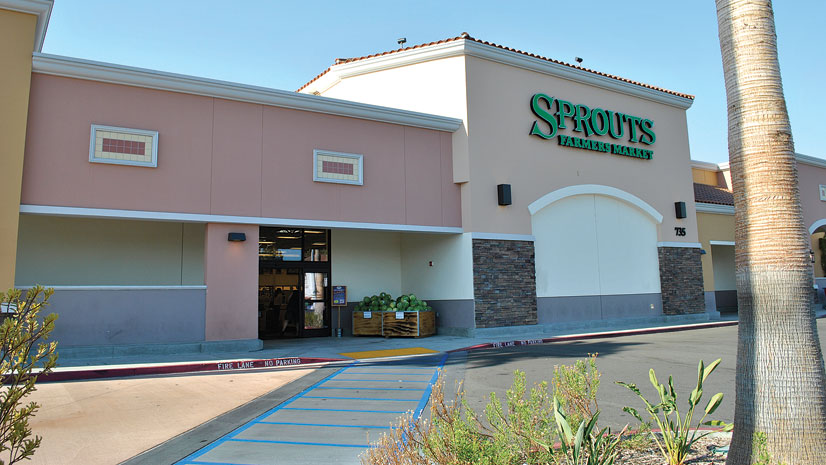
The smaller footprint “allows for greater flexibility in identifying and securing new locations,” Sprouts said in its prospectus.
This July, the company plans to open in a 32,000-square-foot former Linens ’n Things store in Keller, Texas. That will be at least the third conversion of former Linens ’n Things stores to Sprouts, with two others opening in recent years in Orange, Calif., and Castle Rock, Colo.
Sprouts said its typical stores require an average cash investment of about $2.8 million, which includes store build-out costs, inventory and pre-opening expenses. Stores mature three to four years after opening, Sprouts said.
“Based on our historical performance, we target pre-tax cash-on-cash returns of 35% to 40% within three to four years after opening,” the company said in its prospectus. “We believe the consistent performance of our store portfolio across geographies and vintages supports the portability of the Sprouts brand and store model into a wide range of markets.”
Sprouts said it was unavailable to comment for this article because of the pending IPO.
Flexible Footprints
The key is flexibility, said Matt Casey, a principal at Clark, N.J.-based Matthew P. Casey & Associates, which specializes in supermarket real estate research.
“There are a few advantages for The Fresh Markets and Sprouts of the world, that are looking for stores in the 25,000-square-foot range,” he said. It is a lot easier for them to find a suitable location than it is for a 140,00-square-foot Wegmans.
“The smaller the box, the more opportunities there are out there. Plus, it makes break-evens easier.”
He cited Trader Joe’s as one example of a small-format operator that is flexible in its site selection and store design, enabling it to open in a variety of previously occupied spaces, such as a bank with vaulted ceilings in Brooklyn, N.Y.
“It has been my observation that they have been very flexible in their site selection and creative in their store layouts,” he said. “And in all my travels, I have never come across an unsuccessful Trader Joe’s.”
Another example is Mrs. Green’s Natural Market, a 12-store specialty chain that has a handful of creatively sited locations in the Northeastern U.S.
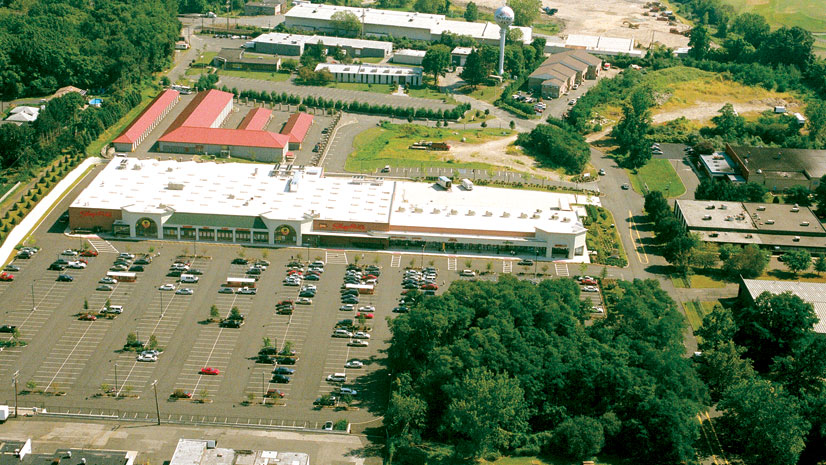
In the densely stored Northeast, retailers looking to expand are carefully watching Montvale, N.J.-based A&P, which observers expect to continue to shed locations. Better-performing rivals like ShopRite and Stop & Shop are opening in former Pathmark stores in New Jersey and Shaw’s stores in New England, both of which are thought to be considering more asset sales.
“A&P has a lengthy list of unprofitable stores whose leases are expiring in the near term,” Casey explained. “Everybody who trades in the areas of those stores has a list of locations they are interested in.”
In the Northeast in particular, he noted, “There are no ‘A’ sites left any more.”
The recent acquisition of Albertsons by Cerberus and its real estate partners could unlock more such sites, including those occupied by Shaw’s in Massachusetts and Acme in the Philadelphia area, observers said (read more here).
In addition, some observers noted that many smaller, family-owner retailers around the country have taken note of the increased demand for real estate from fast-growing operators, and could look to cash out, explained Andrew Graiser, co-president of Melville, N.Y.-based A&G Realty Partners, which assists in such transactions.
“There are a number of independents out there that are struggling a little bit, and maybe haven’t invested in the technologies that are needed in today’s environment,” he told SN. “Some are second- or third-generation owners, who maybe don’t want to work as hard as the first generation.”
With little new construction of shopping centers taking place, those locations could be more valuable as real estate assets to other supermarket chains, he said.
Graiser agreed that while the easiest way for supermarkets to expand is to take over existing supermarket spaces, the proliferation of other boxes during the last few years has made supermarkets more flexible in their criteria for sites.
“I think you are going to continue to see redevelopment of some of those older properties,” Graiser said. “There are plenty of older buildings out there, whether it is the closed Wal-Marts, or department stores that are freestanding that aren’t being used.”
Companies like New York-based Fairway Holdings, which also recently went public to fuel its expansion, Whole Foods Market, and even traditional operators like Cincinnati-based Kroger Co. — which is looking to fill in existing markets — are all potential buyers of such sites, Graiser noted.
“Where there’s good demand, they have to look beyond the traditional developments for growth,” he said. “A lot of good opportunities exist in picking up those independents.”
As an example, Whole Foods last year acquired the leases of six Johnnie’s Foodmaster locations in the Boston area, and recently reopened the first one in Brookline, Mass. At 8,000 square feet, the converted store is the company’s smallest location in the country, according to reports.
Graiser noted that supermarket operators are evaluating their customer and demographic data more carefully than ever to determine the needs of each particular location and decide whether or not to open a smaller store.
“They are doing a lot better research than they used to in order to get the ideal store for each location,” he said. “They know what’s needed for the customer. If they need a bigger box, they look for the bigger box, but if they don’t need that bigger box, maybe they can go smaller and not offer as many SKUs as they might need in other parts of the country.”
Supermarket-anchored centers are generally considered good investments these days, which is also leading some operators to seek to maximize their investments, either by buying properties as investments themselves, or by cashing out and selling them through sale-leasebacks and other types of transactions.
A&P has generated millions through a handful of sale-leasebacks in recent months, while in Canada, Loblaw unveiled plans to sell 425 of its locations through the formation of a new, publicly traded real estate investment trust, or REIT.
Some observers noted that new construction of supermarket-anchored centers could be making a comeback now that the economy and the housing markets are gaining some momentum.
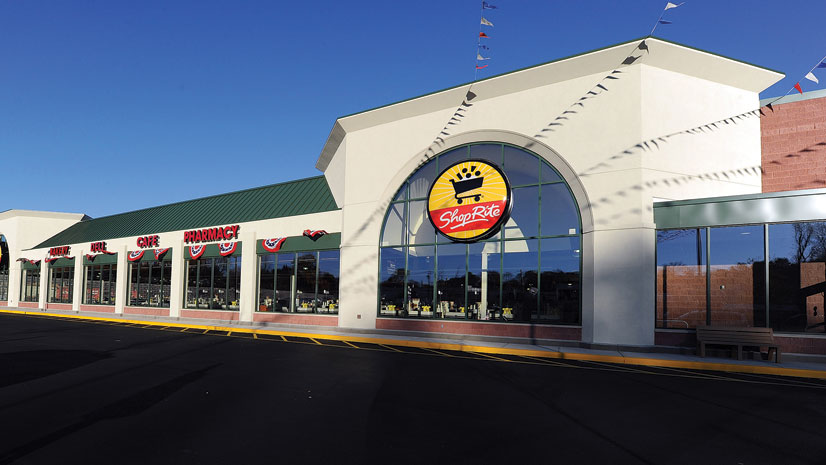
Bob Volosin, a partner in Mahwah, N.J.-based Supermarket Consulting Group, said he believes a lot of the former Circuit City and Linens ’n Things locations that had come on the market have been picked through already.
“Now we are starting to reach a tipping point where most of those properties have been vetted, and some of those remain unoccupied because they don’t work,” he said. “Now we may start to see a little more ground-up development. It’s been very quiet for a long period of time.”
He noted that while it can be less expensive to retrofit boxes that had been used for other purposes into supermarkets, “it is still not cheap.”
“You still have to blast out the floors and run these refrigeration lines and do all these things to convert an existing structure into a supermarket,” he said. “It is still a lot of work, although the approval process is abbreviated.”
Another factor affecting store builds is the fact that younger people appear to be moving into more urban areas, where supermarkets often must occupy previously used, and often oddly designed, sites.
“There seems like there is going to be more opportunity in the inner-city areas going forward as opposed to those suburbs,” Volosin said.
Grant programs that encourage redevelopment in underserved inner-city locations are also making that type of construction more affordable, he added.
In addition, as new developments slowed, it has become much easier for supermarkets to get approvals, Volosin noted. “Getting on a planning board agenda is not a six-month lead time any more, because there is not as much going on in these municipalities,” he said.
Sidebar: Kimco Takes a Long View
NEW HYDE PARK, N.Y. — Acquisitive supermarket companies looking for cast-off sites resulting from the Cerberus-led acquisition of Albertsons and its sister banners might have to wait awhile, according to one of Cerberus’ partners in the deal.
Kimco Realty Corp., based here, which reaped large returns from its investment in Cerberus’ 2006 acquisition of a portion of the Albertsons chain, said the strategy for the newly acquired stores will be to improve their performance before seeking to monetize them.
“What happened in the ’06 acquisition was [that] it wasn’t until 2009 or 2010 that we monetized it,” said David B. Henry, president and chief executive officer, Kimco, in a conference call last month discussing the company’s first-quarter earnings.
The idea was that the value of the stores could be improved by boosting their performance.
“As the operations improve, the ability to monetize that real estate increases dramatically,” Henry said.
Cerberus Capital Management led the acquisition earlier this year of 877 supermarkets from Minneapolis-based Supervalu, including the Shaw’s and Star Market banners in New England, Jewel-Osco in Chicago, Acme Markets in Philadelphia and Albertsons in Southern California.
A source at Boise, Idaho-based Albertsons previously told SN that it planned to operate “as many profitable stores as possible.”
Milton Cooper, executive chairman, Kimco, said the company “continues to be optimistic for our [latest Albertsons] investment and feel confident that the management team can replicate the remarkable success of our original Albertsons investment.”
As an example of the potential value in the deal, he cited the Star Market on Boylston Street in Boston, which he said is “a successful store,” but has received offers “in excess of $25 million” from developers seeking to build a high-rise there.
As part of the transaction, Cerberus and Kimco also acquired an interest in Supervalu, which continues to operate regional supermarket chains, the Save-A-Lot banner and its wholesaling operations.
Henry also noted that Kimco owns 19 properties where Albertsons and Jewel stores are located, and another eight stores where Supervalu has stores.
“So our 26 shopping centers directly will benefit and have better credit and the tenants do better in those locations,” he said.
| Suggested Categories | More from Supermarketnews |
 |
|

|
|

